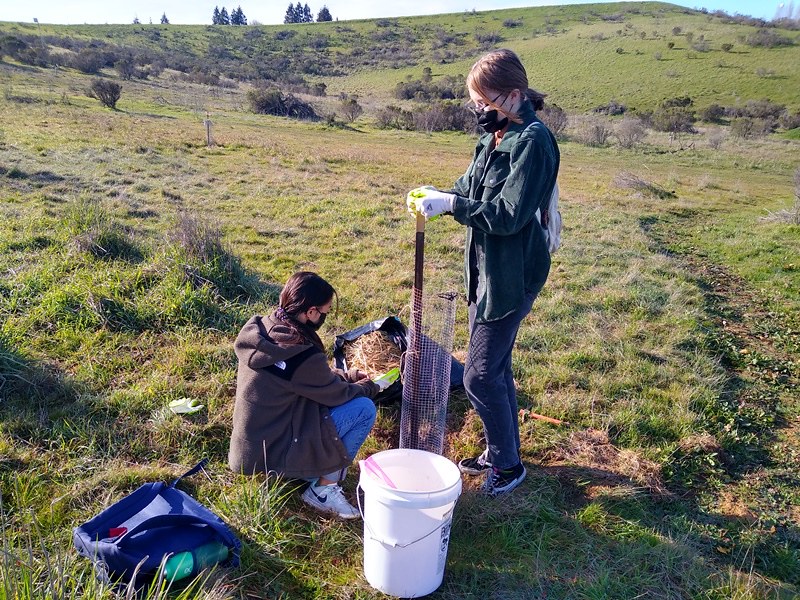SuSol Seeks to Engage Indigenous Voices in Our Work
By Sustainable Solano
Sustainable Solano works with local communities here in Solano County and honors the lands that we are lucky to do that work on. As this land originally belongs to the Patwin, Miwok, Karkin, Muwekma, Confederated Villages of Lisjan, and Ohlone peoples, these indigenous communities continue to hold and steward this land as they have for time immemorial. We thank the original peoples of this land with the utmost gratitude for their stewardship of this beautiful Earth and their resistance to its destruction past, present, and future. Because it is our mission to nurture initiatives for the good of the whole, we recognize that true equity arises when we intentionally engage and empower communities who historically have been mistreated by the systems in place.
It is our intention to get our resources into communities that are not regularly afforded access to these resources, but we have realized that we have not been making enough effort to invite indigenous people to the table. As an organization we seek to counter the harm these systems perpetuate with action, one way being through opening up our platform to directly uplift indigenous voices.
We are actively looking to engage with more indigenous community members in our work. SuSol team members have been in communication with representatives from local tribal communities, and we want to see how we can support the identified desires of indigenous groups and individuals in ways that intersect with our mission.
As a part of many of our programs, we are always seeking people to teach classes to the wider community. This is paid work, where we look to bring people together in gardens and beyond to learn more about permaculture, sustainability, resilience, waterwise gardening, farm-to-table cooking, and connecting with love for and solidarity with our Mother Earth. We acknowledge that we have a responsibility to make these jobs especially accessible to indigenous communities, whose knowledge is the foundation for so many permaculture practices and ways of connecting with the Earth, our non-human relations and each other.
This is a starting point for working together. If you are an indigenous community member and are interested in partnering with us, please contact info@sustainablesolano.org
Our goal is to open up a space to share your knowledge, foster community connections, and to come together to support increasing access to land. We wish to uplift our communities by prioritizing connections based on equity and decentralization, while learning together how to live in harmony with our neighbors of all species.




 On the first day of class, I cooked tofu stir fry with rice. The preparation of the meal went rather smoothly. Other than a few near mishaps with a knife and the flame on the kitchen stove, everyone walked out with all ten fingers and eyebrows intact. I sat at the table anxiously awaiting our meal. There was not a chicken tender or bottle of ketchup in sight. But the moment that I picked up my fork and reluctantly shoveled the concoction of onions, carrots, spinach, and celery into my mouth, my mouth curled up when I began to chew. It was pretty good! With just a little taste, my love for cooking came to fruition and it provided a new outlet to relieve my stress. And with a little bit of practice and patience, however, cooking became less daunting and more enjoyable. Being able to cook my own food and making an effort to eat sustainably also had a positive impact on my health. I also shared my affinity for cooking with my family as I became in charge of making Saturday night dinners. The sly looks that I once received at the dinner table were replaced with hearty laughter and the sound of our mouths voraciously eating our food.
On the first day of class, I cooked tofu stir fry with rice. The preparation of the meal went rather smoothly. Other than a few near mishaps with a knife and the flame on the kitchen stove, everyone walked out with all ten fingers and eyebrows intact. I sat at the table anxiously awaiting our meal. There was not a chicken tender or bottle of ketchup in sight. But the moment that I picked up my fork and reluctantly shoveled the concoction of onions, carrots, spinach, and celery into my mouth, my mouth curled up when I began to chew. It was pretty good! With just a little taste, my love for cooking came to fruition and it provided a new outlet to relieve my stress. And with a little bit of practice and patience, however, cooking became less daunting and more enjoyable. Being able to cook my own food and making an effort to eat sustainably also had a positive impact on my health. I also shared my affinity for cooking with my family as I became in charge of making Saturday night dinners. The sly looks that I once received at the dinner table were replaced with hearty laughter and the sound of our mouths voraciously eating our food.







